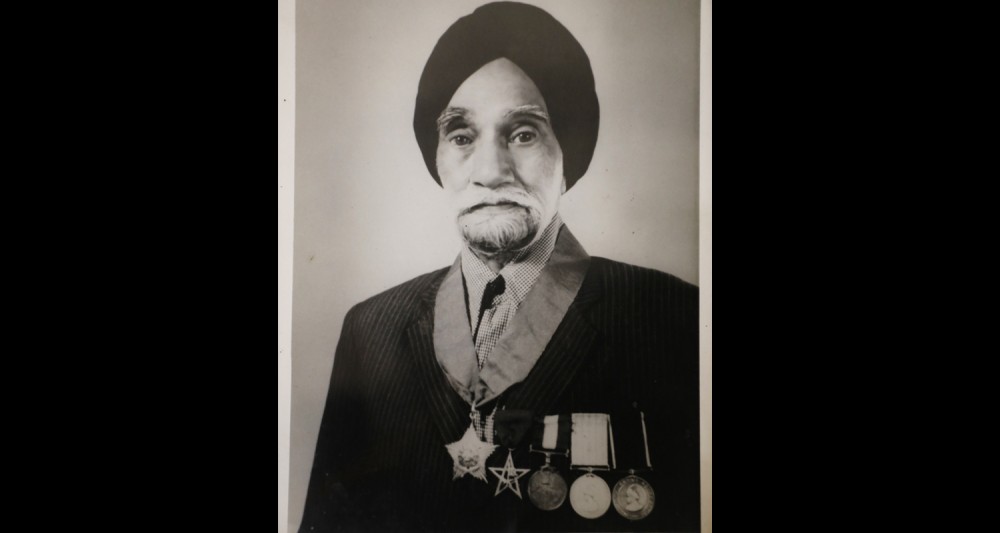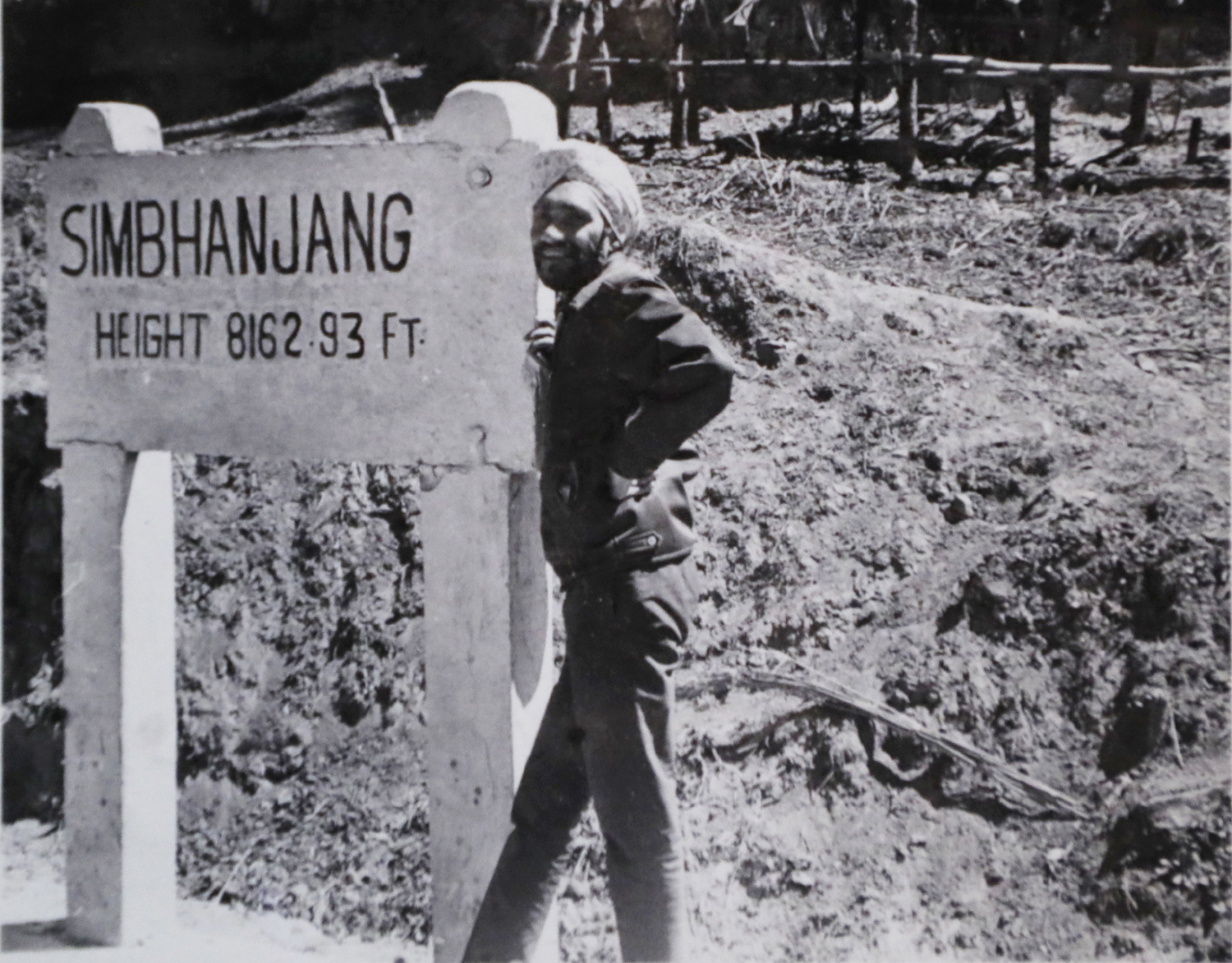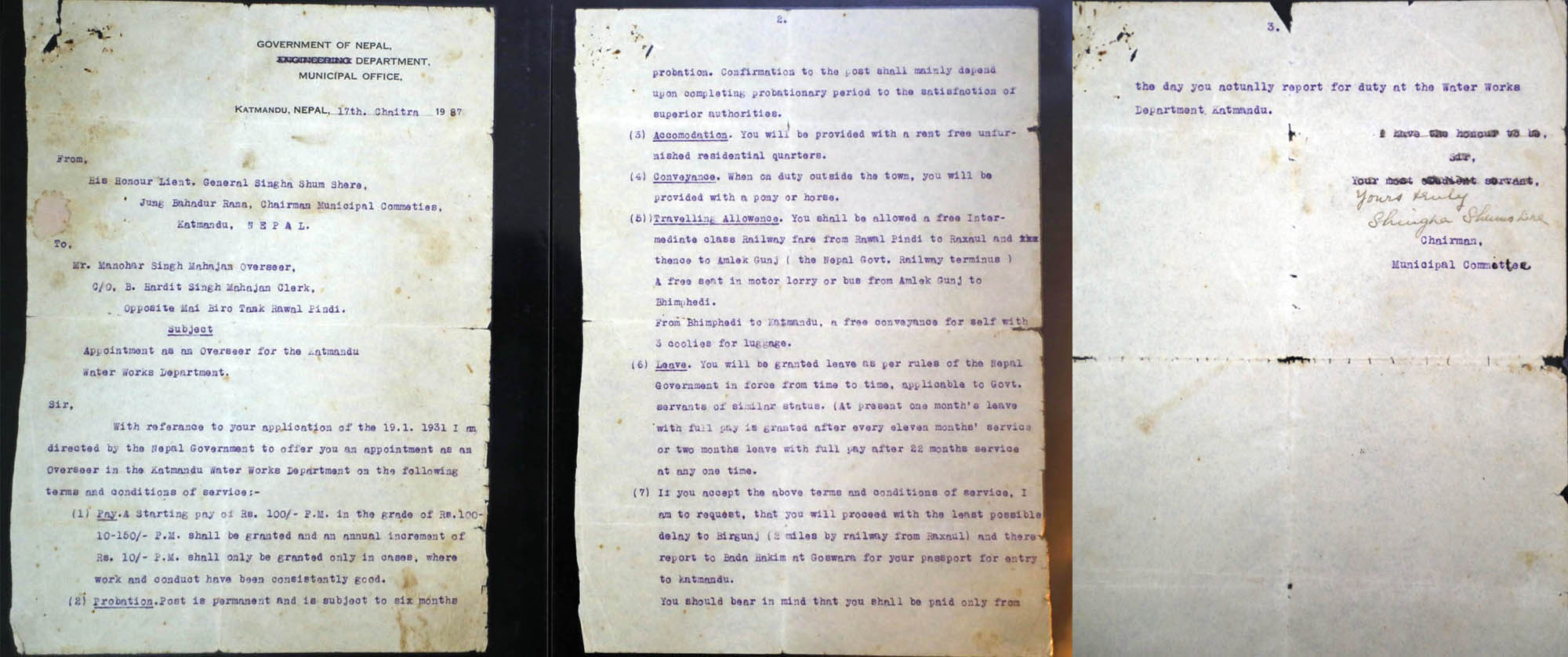
Jun 11, 2019 : The saying goes that Sardar Manohar Singh could point to where each water pipeline had been laid under Kathmandu, and where all the valves and chambers and reducing holes were. Manohar--who came all the way to Kathmandu from Rawalpindi in 1931--knew all this for a simple reason: he had played a crucial role in laying them. And when Kathmandu started tracing networks of roads above those very pipelines, it was Manohar’s son, Sardar Hardayal Singh, who would build paths and ensured their maintenance.
Well known in their lifetimes by government officials, ruling elites and commoners alike, for their pioneering contributions to Kathmandu’s water and road infrastructure, the father and son remain fresh in the city’s collective memory as turban-clad engineers with Nepal’s civil service. These two men, who settled in Kathmandu, left indelible marks on all of Nepal’s water and road infrastructure, but most notably in the Valley. According to family members, the Kathmandu Water Works Department of Nepal’s government had called for applications for the position of overseer in advertisements in Indian newspapers, so distant relative Captain Basant Singh, another Rawalpindi Sikh working for Nepal’s royal family, encouraged Manohar to apply. Although he had the entire British Raj’s vast territory to choose to work, alongside an opportunity awaiting him in Iran, 33-year-old Manohar was attracted to ancient Kathmandu by the prospect of adventures of living in exotic Nepal. The country was still largely forbidden to the outside world.
Manohar was filling an important position, with the job offer itself signed by Lieutenant General Shingha Shumsher, son of the preceding Rana Prime Minister Chandra Shumsher and chief of the Kathmandu Municipal Committee. The letter, dated Chaitra 17, 1987 BS (March 30, 1931), and carefully preserved by Manohar’s family today, states in purple typewritten text all the facilities and respect Manohar would receive--paid transportation from Rawalpindi to Kathmandu, including the journey’s last leg from “Bhimphedi to Kathmandu [sic]; a free conveyance for self with 3 coolies for luggage”; a good starting salary by the day’s standard of Rs 100 per month; “rent-free unfurnished residential quarters”; and “when on duty outside the town, you will be provided with a pony or horse.” But despite all these amenities, Manohar almost left as soon as he’d arrived, says 70-year-old Jagdish Kaur, Hardayal’s wife and Manohar’s daughter-in-law. Rawalpindi was cosmopolitan, while Kathmandu Valley was still closed off, a small semi-urban space existing alongside rural fields and villages.

Geographically and culturally, Manohar had little in common with Kathmandu. Few spoke Hindi, almost no one spoke Punjabi, and he didn’t speak Nepal Bhasa or Nepali. The food was strange, little like the roti, daal, rajma and variety of spicy achars his palate was accustomed to. A tall, young man, his favourite deep blue turban neatly fastened around his head and decked out in a cleanly ironed white Rawalpindi kurta shalwar, his fair face covered in a thick black beard, people found Manohar amusing. Jackals ran wild around his office in Tripureshwor, and his residence in Bagbazar, which, like many parts of Kathmandu then, was surrounded by wild bush. And—in a blow to the ego of the young and ambitious overseer—there were no tables or chairs in his office, only a sukul, as was customary at the time.
“It was all strange for him and naturally, a big cultural shock. So not long after arriving in Kathmandu, he felt homesick and lonely, and wanted to return to Rawalpindi right away. Basant Singh eventually talked him out of it, and he agreed to bring his wife and remain here,” says daughter-in-law Kaur. Manohar—and eventually Hardayal, who was born in Bhonsi ko Tole in Kathmandu five years after his father’s arrival—would go on to make contributions at a time when engineering expertise was very rare, says Satyanarayan Manandhar, 83, a friend who studied and worked with Hardayal.
“When Manohar came in 1931, engineers could literally be counted on one’s fingers,” says the former divisional engineer at the Department of Roads. “The very fact that the Nepal government had to put up advertisements in Indian newspapers to bring in engineers from outside testifies to how the country lacked such human resource. Decades later, when Hardayal and I joined the government service in 1958, there must still have been no more than 15-20 overseers and engineers in Nepal.” With their expertise, both father and son would go on to provide crucial knowledge and skills to develop infrastructure in Kathmandu and other parts of Nepal.
About four decades before Manohar’s arrival, Rana Prime Minister Bir Shumsher installed a piped water supply in Nepal by commissioning the establishment of the Bir Dhara in Kathmandu in 1895, which supplied water to Rana palaces as well as selected parts of Kathmandu through limited private and community standpipes. The system led to the establishment of the Pani Goshwara Adda (Office for Water Supply). Bir’s successors gradually extended the water supply to encompass newer settlements in Kathmandu and select parts of Nepal. It was while this was happening that Manohar was appointed to the Kathmandu Water Works Department under the Pani Goshwara Adda. And although family members, friends and government officials are unaware of the finer details of where Manohar worked, there is general agreement he would have played key roles in laying networks of water pipelines in Kathmandu in this evolving system.
“Working as an assistant to a few engineers of that time, Manohar was involved in every single area of Kathmandu, laying its pipelines and building water systems,” Manandhar says. “He was also involved in developing water supply distribution systems in the Valley’s Rana and Shah durbars.” Karna Dhoj Adhikary, 87, who returned with an engineering degree from India in 1955, was one of the first few chief engineers at the Department of Irrigation and Water Works. He remembers Manohar with admiration--for his dedication, diligence, and promptness in duty, along with encyclopedic memory of the extensive, complicated distribution pipe system laid decades ago not only in the cities of Kathmandu, Lalitpur and Bhaktapur, but also in Banepa and many other places of the country.

Hardayal proudly listed in his curriculum vitae some of the notable works on road, water and other infrastructure he completed as the overseer and engineer at the Department of Roads, the Department of Water Supply, and the Water Induced Disaster Prevention Technical Centre (DPTC) under the Ministry of Water Resources. As the chief of Sano Gaucharan Road Division, he led the repair and maintenance of the Kathmandu-Sankhu-Sundarijal road, and of the Kathmandu-Airport VVIP road. Outside Kathmandu, he participated in the survey and construction of the Pattharkot-Thada road from Pattharkot in Sarlahi to Thada in Arghakhanchi.
Every monsoon, the Kathmandu-Bhainse stretch of the Tribhuvan Highway, a crucial lifeline to Kathmandu, would be torn off by landslides, hindering crucial supplies. Hardayal enabled vehicles to operate all year round through the bolstered maintenance of this section. He developed a water supply system to fulfil Tribhuvan University’s needs by building a reservoir to collect water from a stone water spout in Dhobighat in Lalitpur and channelling it to the University, and in 1997, he designed and constructed the Sankha Park at Dhumbarahi, which was once a popular park in the locality, but has now seen a decline. How small the world of engineering was in Kathmandu and how important the role of the father and son duo is exemplified by instances of how often their works crossed each other’s, leading to sometimes light--but at times sour--squabbles.
Kaur, and her son 49-year-old Jeetendra Pal Singh, say that Hardayal often encountered a group of workers, mostly under his father’s instructions, digging up roads under his charge. “He’d ask them to stop, but they’d curtly respond with ‘Our boss has asked us to not stop, no matter what happens’. With no option, he’d call the police and have them locked away,” Kaur recalls. During lunchtime at home, sensing the lingering premonition of his father’s anger awaiting him, Hardayal would tiptoe in from the back door, peek into the kitchen to see if Manohar was still eating and enter only after ensuring he had left. But, of course, coming face-to-face was inevitable for father and son. The exchanges Kaur and her mother-in-law heard went thus:
“How dare you throw my men behind bars?”
“Pitaji, a permit from the Road Department is all they need before they start to dig. I’m compelled to have them taken away, even if to keep appearance before my colleagues and seniors. Please Pitaji, just a small permit…..” “All our work has stalled because of you. And couldn’t you leave the shovels, other tools alone? You had to have them locked away too?” “But our department has its own ongoing plans and works.”
“Now, don’t you start preaching to your father what to do and what not to."
“Not that Pitaji, but you can’t work without permission just because your son is in charge.”
The discussions often ended with Hardayal eventually relenting to his father and calling up the police station to have the workers released. But once, Kaur and Jeetendra say, the matter reached right up to the king. “Once my husband had the police lock up the workers along with their spades and shovels and everything else they were working with. Just around that time King Birendra made a visit to the Department of Water Supply, my father-in-law’s office. He complained to the King that his son Hardayal had been repeatedly locking up his workers, thus creating obstacles in his work. In a light exchange, King Birendra told him that he didn’t want to interfere in the bau chhora ko jhagada. But eventually, he had his men coordinate with Hardayal and had the workers released,” Kaur recalls.
Because of their reputation as qualified engineers along with their unique identity as Sikhs in Nepal’s civil service, they were known in the palace, and among government officials and locals, says friend Manandhar. And whenever members of the ruling Rana and Shah families encountered problems related to water systems, or anything needing engineering support in their durbars, it was Manohar, and later Hardayal, that they sought.
Gautam is a freelance journalist with a special interest in social history.
[This is the first part of Gautam’s account of two Sardars, Manohar Singh and his son Hardayal Singh in 1930s and 1950s Kathmandu. Read the second and final part on tomorrow’s Kathmandu Post.]
Source: The Kathmandu post